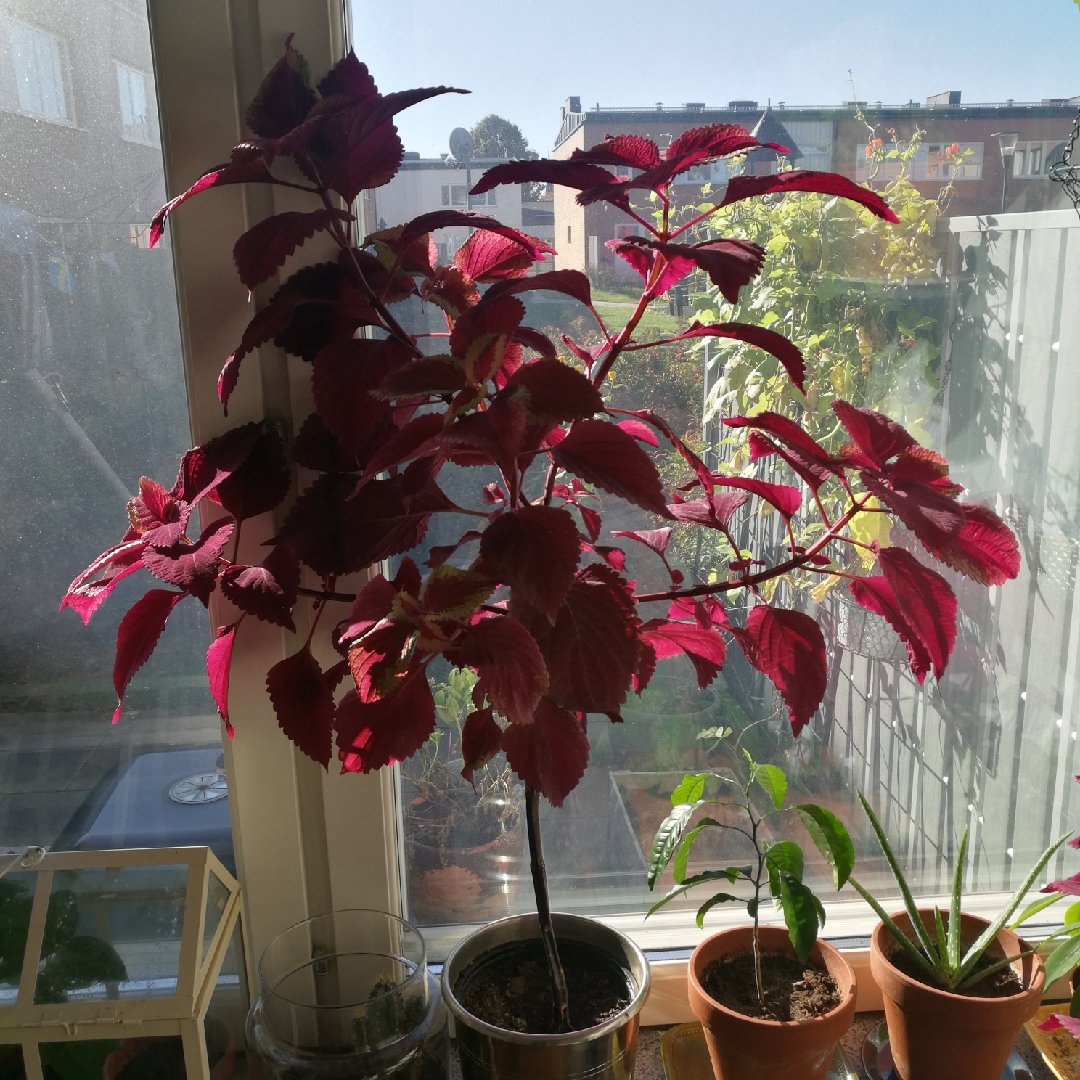
Plectranthus scutellarioides 'Redhead'
Coleus 'Redhead'
Grown mostly for the colourful foliage, coleus have nettle-like leaves with serrated edges, and come in a range of colours; reds, purples, greens, yellows. Taller varieties can be used in borders, and shorter varieties can be grown in pots. 'Redhead' has tomato red pointed, serrated leaves. (The flowers are insignificant)
Contributed by @alexbanan
-
Partial shade
-
Occasional watering
-
Not Frost hardy
-
Moist and free draining
Common name
Coleus 'Redhead'
Latin name
Plectranthus scutellarioides 'Redhead'
type
Annual or short-lived perennial
family
Lamiaceae
ph
5.5 - 7.5 Acid - Neutral
Plant & bloom calendar
-
Best time to plant
-
When the plant will bloom
full grown dimensions
 0.60 M
0.60 M
0.60 M
0.60 M
Plectranthus scutellarioides 'Redhead'
Grown mostly for the colourful foliage, coleus have nettle-like leaves with serrated edges, and come in a range of colours; reds, purples, greens, yellows. Taller varieties can be used in borders, and shorter varieties can be grown in pots. 'Redhead' has tomato red pointed, serrated leaves. (The flowers are insignificant)
Flowering Season
From Mid Summer TO Early Autumn
If left to grow naturally, most Coleus will produce somewhat insignificant tubular flowers on flower-spikes. These typically appear from mid-summer to early autumn, followed by seed. It is often recommended to remove flowering tips and prevent seed formation to keep the vigour of the plants (see pruning task)
Planting
From Late Spring TO Early Summer
All Coleus plants are intolerant of cold temperatures and frost. It is important when planting young growing plants out in the spring to only do so when the last possible risk of frost has passed otherwise, and when night time temperatures start to reach between 10-15C (or 50-60F). All young Coleus plants require a period of 'hardening off' before they are planted outdoors. Whether you have grown from seed, from cuttings, or purchased young plants from a nursery, once a Coleus plant is big enough you can place them outdoors everyday for 3-4 hours in full or partial shade in a sheltered position to acclimatise to the conditions. The amount of time spent outdoors can be gradually increased each day until after approx a week to ten days after which point they can be planted out into their final positions. If planting in an exposed site, ensure there is a suitable wind break or sun shade for a period of time after planting until they become established. Water regularly to ensure the soil does not dry out, but do not over water so that it is too wet. Keep just moist. Plants that are exposed to high sun, winds or temperatures too soon will usually wilt or get leaf damage. Most Coleus do well where sun is received in the morning, and protected from the hottest parts of the day at noon and in the afternoon. This also usually brings out the best colouring in foliage. The exact requirement will vary for each cultivar and your location, but most do best best in partial sun/shade. Coleus does not usually do well in full shade, and it is usually best to avoid full sun completely when grown in much hotter climates where temperatures are very high. Established plants are much better at tolerating higher temperatures and only providing the soil is kept moist.
Propagation by Seed
From Early Spring TO Late Spring
Coleus is tender and although it can be grown from seed it is usually sowed in early spring under protection with additional heat. Prepare a propagator tray filled with a good quality multi-purpose compost and sow the seeds. You can mix the seeds with a fine sand if required to help you spread them evenly over the soil. Cover with a very fine layer of compost. Water the tray from beneath, not overhead, and cover with glass, film or a propagator lid. Keep at a warm temperature of approximately 18-21C (65-70F) and germination will usually occur within two weeks. Once germinated, remove the cover and let them grow on until they are large enough to handle, which is usually when they have about two sets of true leaves. These can be pricked out into individual small pots to grow on further until they are large enough to plant out. It is important to harden off plants grown under protection first before planting directly outside.
Propagation by Cuttings
From Early Spring TO Late Winter
Coleus can be propagated from softwood cuttings, or non-flowering tips at any time of the year, although it is usual to take such cuttings in late summer or early autumn in preparation for overwintering new young plants to plant out the following spring. Cuttings can be rooted in water quite easily, and will grow in water on a windowsill for some time before they need potting on. Alternatively, they can be rooted directly in a suitable growing medium. Using a sharp knife, cut off a tip of a non-flowering stem approximately 2-3 inches long and ensure it has at least one set of leaves below the tip. Remove the lower leaves, leaving just the tip with foliage, and push the cutting into the soil gently so that the lowest leaf node is just below the soil surface. Keep the soil warm and moist in a bright light, but not direct sunlight. Rooting of Coleus cuttings is usually quick within a couple of weeks. They are easy to root, and although rooting hormone can be used it is often not really necessary.











